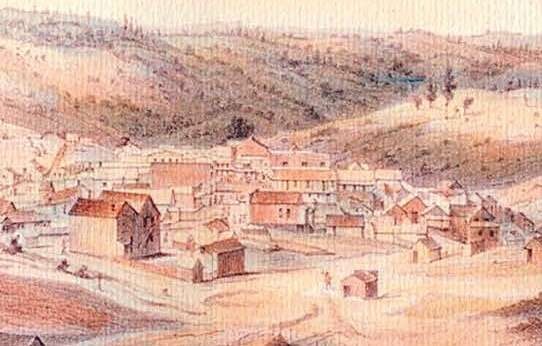Calaveras Settlements

Close behind the prospectors and miners came the agriculturalists, families from the eastern states and Europe who saw opportunities for stock-raising and truck garden operations on the open grasslands. Following the decline of placer deposits in the Mother Lode after ca. 1860, farming gained importance as a family enterprise, which helped to establish more permanence and stability in the society. Settlers established farms growing hay, alfalfa, and wheat, and planted orchards and truck gardens. Most families practiced a mixed agricultural economy, raising cattle, sheep, hogs, and poultry, which supplied them with a steady supply of foodstuffs augmented by vegetable gardens and orchards. Livestock, however, has always been the backbone of the agricultural industry, with the practice of transhumance (taking livestock to the high country to pasture during the summer and returning in the fall to their foothill ranches) opening up the high country to cow and sheep camps.
Commercial winemaking began in the county in 1851, with 1,000 vines set out on the Calaveras River. Mokelumne Hill was another center of wine production, but vineyards were also planted in virtually every community in the early years. Hops were grown and baked in kilns for breweries that produced local beers and ales. Olive trees were planted and the olives cured or made into oil in both family and commercial orchards. Local farming, however, never developed beyond a subsistence level and gradually gave way to livestock operations.
